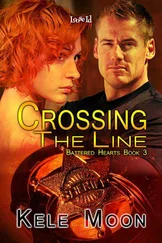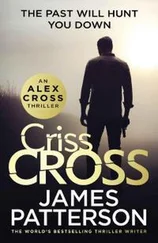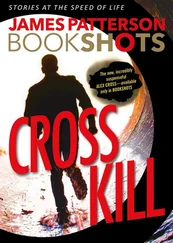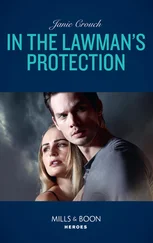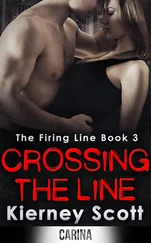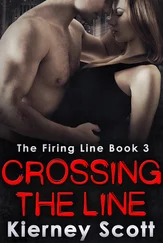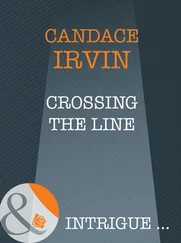Bree stepped away from the lectern, and the DEA SAC took her place.
Potter said, “Before last year, I would have told you that there was no drug gang brazen enough or capable enough to pull off this kind of massacre. But in the last six months, across northern Mexico and the desert Southwest, we’ve seen a rise in deadly turf wars. Traffickers shot and left for dead. Labs like this one blown up. When I was in the El Paso office, it looked like some group was bent on cornering the market in illicit drugs, forming kind of a supercartel that was willing to kill anyone in its way.”
“We have a name for this supercartel?” I asked. “People involved?”
Potter looked at me, said, “I wish we did, Dr. Cross. In El Paso, it was like chasing ghosts, and then I was transferred here.”
“Did you have any intelligence about that factory?” Sampson asked.
Potter looked at his men, who shook their heads.
“It was as big a surprise to us as it was to you,” Potter said, and then he sighed. “But then again, we’ve been shorthanded. Budget cuts.”
Ned Mahoney cleared his throat, said, “I don’t know about a supercartel, but I think you’re right about brazenness being a factor here. You’d have to be stone-cold to do this, so I think we have to agree from the start that this was professionally done and proceed from there.”
“No doubt,” Potter said. “These guys were highly trained.”
“SWAT level?” Bree asked.
“I think we’re dealing with a group that’s quite a few steps above SWAT,” Mahoney said. “This feels commando-trained, at a minimum.”
“So, mercenaries?” Sampson asked.
“Could be,” Mahoney replied. “There are a lot of private security contractors around, now that Iraq and Afghanistan are winding down. I don’t think you’d have trouble putting together an elite team if the money was right.”
“Hold that thought,” Bree said, and nodded.
Photos of the remaining two John Does, the ones dressed for business, got bigger on the screen.
“We think these two are the moneymen,” she said. “Either they funded the lab’s construction and equipment or they were involved in the sale of—”
Mahoney’s phone started beeping. So did Bree’s. And Potter’s.
They all went for their phones. Bree’s was right in her hand. She scanned the screen, stiffened, and said, “Two more drug labs have been hit. One in Newark. Another in rural Connecticut. Multiple deaths confirmed in both places.”
Both meth labs had been taken down within minutes of each other, and with the same attention to detail. All the people inside the drug factories were dead. There were no cartridge casings at either scene. In each case, hundreds of thousands of dollars and multiple kilos of methamphetamine were left untouched.
Ned Mahoney and the FBI seized control of the larger investigation at that point. Three different massacres across state lines demanded it, though Chief of Detectives Bree Stone remained in charge of the Anacostia slayings.
It was a little odd at first, having my wife be my boss, but then I realized she and Nana Mama ruled the roost at home anyway, and I got over it. Even better, Bree was good at being a chief. Right off the bat. She had a knack for pulling the levers, getting you what you needed.
But despite her efforts, for several days we made little progress. Then, ninety-six hours after we arrived at the massacre scene in Anacostia, we identified the two dead businessmen through missing-persons reports in Virginia and Maryland.
Chandler Keen of Falls Church ran a small investment firm currently under investigation by the SEC. Matthew Franks was a Bethesda-based real estate developer who’d been hit with several multimillion-dollar legal judgments in construction-default lawsuits.
The FBI raided their offices and homes, but it was going to take some time to cull through the seized evidence. It was clear, though, that both men had had adequate reasons to get involved in the lucrative business of illegal drug manufacturing. But how it had happened and why they and the twenty others had been targeted for death remained a mystery.
Cable news, not surprisingly, went bonkers over the case, especially the Georgetown University angle. Students were back on campus and some of them were more than happy to talk. As a result, we knew a lot more about the five genius victims, but nothing game-changing.
On the sixth morning after the massacre, I told Bree I was going back to work the Tom McGrath case while we waited for forensics to give us some kind of tangible lead on the factory killings.
“Wish I could go with you,” she said, sitting behind her desk with a stack of papers before her. “But between fielding calls from the brass and making decisions on overtime, I’m going to be here for a while.”
“I feel for you. Take my dad’s advice: delegate the worst of it.”
“I can’t delegate anything until I understand the job.”
“True,” I said. “You’re doing great, by the way.”
“You think?”
“Not just me. Keep trusting your instincts.”
Bree laughed. “They’re all I’ve had so far. Where are you going?”
I told her I was going to look for an American University law student named JohnnyBoy5.
Sampson and I made a trip to the administrative offices of American University’s law school. We explained we were working on Edita Kravic’s murder case, and that got us fifteen minutes with the dean, who told us Kravic had been a star student, a role model for foreign students and women entering school at a relatively late age.
“We could use some help, then,” I said, and I told him about JohnnyBoy5. “That’s his online name, but he’s a student here, and we want to talk with him. Can you figure out who he is?”
“May I ask why?” the dean said.
“He was obsessed with Ms. Kravic,” Sampson said. “Maybe enough to kill her and Chief McGrath.”
The dean cringed at the idea that one of his students might have murdered another as well as the police chief. He hesitated, said, “There are privacy issues.”
“More important than bringing a double murderer to justice?” I said flatly. “Do we have to go to the press and tell them that the dean of a law school is being obstructive in the hunt for a cop killer?”
Five minutes later, we had a bead on one John Boynton, aka JohnnyBoy5, a second-year law student from Indiana who was attending a summer class on torts in the school amphitheater. The dean texted us his photo.
We waited in the hallway on the second floor of the law school for the lecture to end. A crowd of students began exiting the amphitheater, and I soon had eyes on JohnnyBoy5, who was still inside the room, about ten feet back from the door.
“Check out the hairdo,” I said.
“I see it,” Sampson said. “Flashy.”
I don’t know what about us tipped Boynton. Maybe it was his Spider-Man instincts. Or maybe just the memory of a big guy threatening to break his face. Whatever triggered it, the guy with the spiked blond hair took one look at us and shoved several students forward hard, causing people in the crowd to stagger and fall like dominoes. Then he spun and took off deeper into the lecture hall.
“Sonofabitch, he’s running!” Sampson roared. He drew his service weapon and sped after him, throwing students out of his way and yelling, “Police! Get down!”
I went another route, running down the hall toward an exit sign. I shouldered the door open and took the stairs four at a time. When I hit the bottom I threw open a second door, saw students fleeing the amphitheater through an exit at the end of the hall.
A girl looked over her shoulder and screamed. I stepped into a janitor’s closet next to the stairwell, leaving the door open.
Читать дальше

